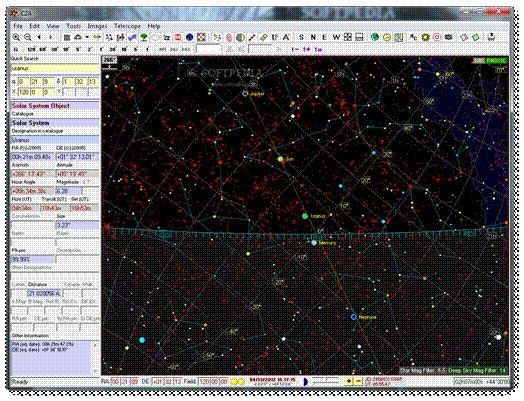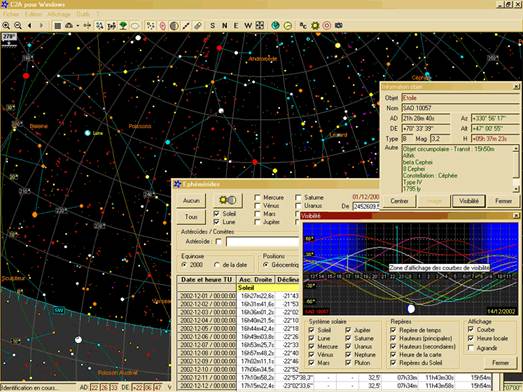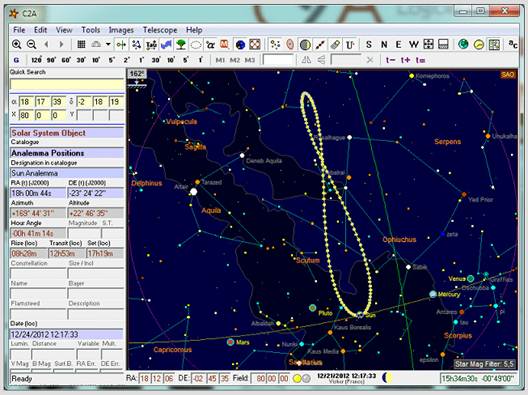C2A
Details
- Price: Free
- Manufacturer: Philippe Deverchère
- Website: www.astrosurf.com/c2a/english/index.htm
- Required Spec: Windows XP +, internet connection, 1GHz CPU, 1GB RAM

C2A is a behemoth of a program
C2A, or Computer Aided Astronomy as it’s also known as, is a planetarium application that contains more options within its interface than you could ever possibly use as an amateur astronomer. That’s not to say it’s useless to the amateur, it just that its features are many and offer a bewildering number of extra, additions and options.
In terms of stellar cartography, C2A comes up as one of the most detailed programs there is. It may be ugly in comparison to the likes of Stellarium or WWT, but it allows the user to access the combines star databases of the SAO, Guide Star, Tycho-2, USNO0SA1.0 and USNO-A2, including field images from the Digitised Sky Survey over an internet connection. Plus, if that lot wasn’t enough, C2A tracks, either in real time or in five minute steps, planetary positions, asteroids and comets as well as over 6600 deep sky objects.

C2A – Computer Aided Astronomy
The viewing options for C2A can be tweaked to reveal even greater precision regarding the positions of astronomical objects, with options to include taking into account atmospheric refraction and precise Longitude and Latitude locations, with altitude compensation. You can opt to view every recorded asteroid and comet, and have their position marked every five seconds, you can view even more deep space objects through the downloading of user defined star catalogue sources.
If you have the ability to connect your computer to your telescope, then C2A will act as a positioning Goto controller, with an option for manual control and continuous target tracking. You can also take Telescope camera snapshots (if you have the equipment available) and combine the images to create a stop motion movie of an object as the scope tracks it. Right-clicking on any object in the main window will also allow you auto-position the telescope to the selected object, while you can zoom in via C2A and view any deep field images of the object, as seen from Hubble or an Earth based observatory.
The level of detail given to each object is amazing, with a second by second update of the objects position in the sky, along with the necessary azimuth, right ascension and declination, date of discovery, name of the discoverer, other designations, distance to the object and whether you would require a particular telescope to view, or if it can be seen by the naked eye. This same level of detail also exists in the many pop out windows that come from selecting some of the sub-options of the various menus. Windows such as images from the Deep Sky Survey, planetary positioning graphs for every month from 1987 to 2020, planet visibility for the current month, phases of the moon and the Ephemeris Generator.

The Sun analemma can be displayed in the maps and represents the daily positions of the Sun over one year at the same local time every day.
C2A is quite simply the most comprehensive of all the applications in this group, almost to the point where it becomes confusing and unnecessary. For the amateur astronomer who has the equipment, C2A is a great addition and can easily take over the role as the computer control for the scope, or become the top sky charting program. For those without the equipment, it offers far greater detail than can be found in the other programs reviewed here, however, for the casual enthusiast, or relative newcomer, who wants something easier to navigate and simpler to use, then C2A will be too much take in.
Verdict
- Quality: 8
- Value: 8
- Overall: 8




